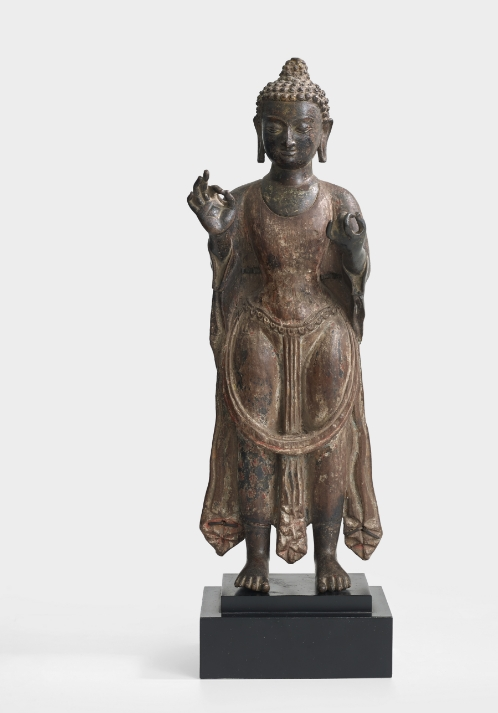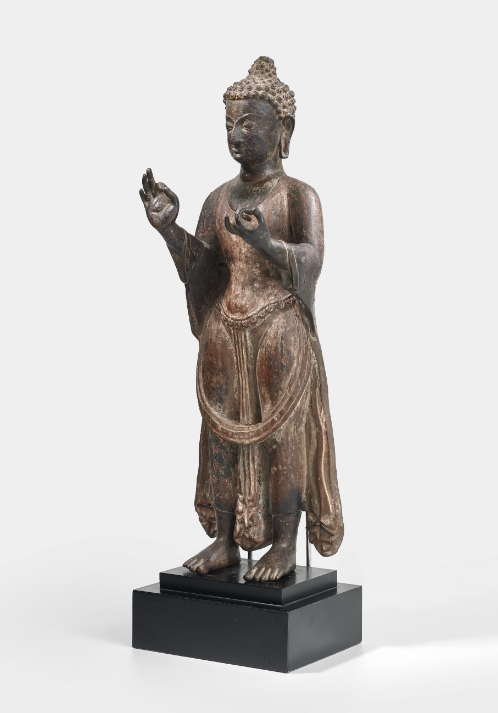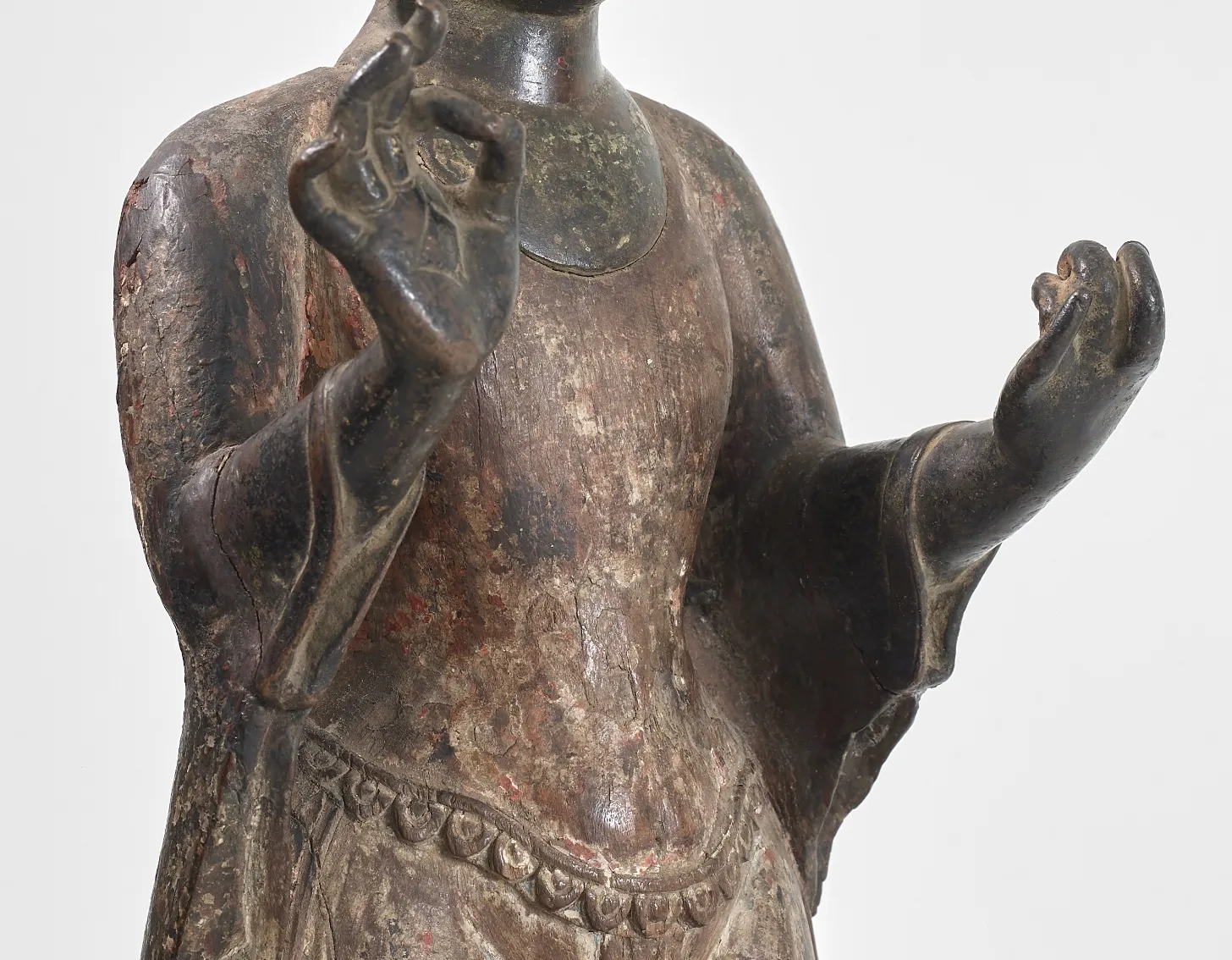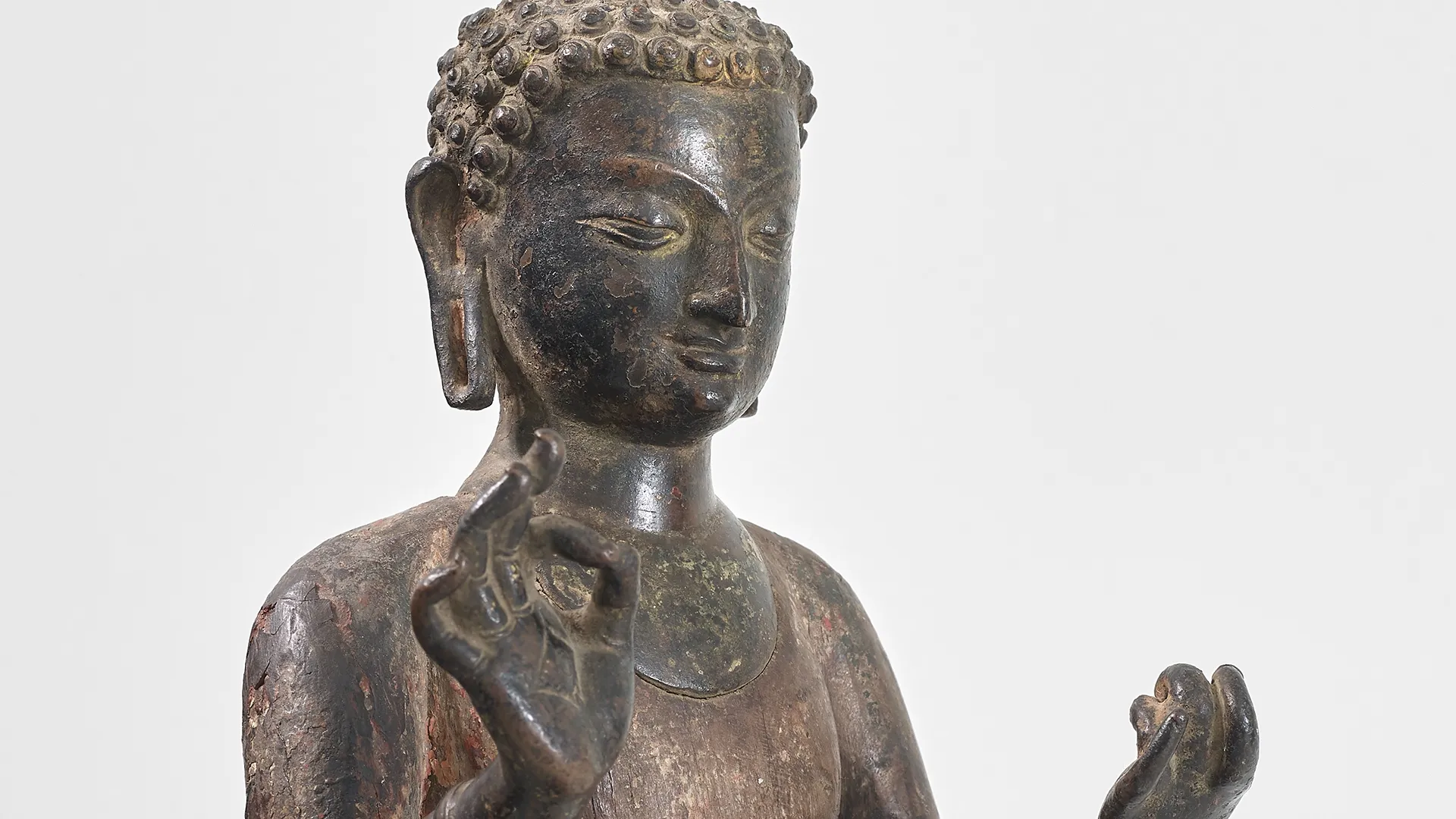Dipankara Buddha, The Buddha of Light, was also popular in Newar Buddhist communities during the Malla period, and dozens of such images have survived. In the c. 14th-16th-century example in this collection, Dipankara’s body is made of wood, and his head, hands, and feet are made of copper alloy (cat. no. 12). The deity’s role in protecting merchants ensured his continued veneration by the Newar business community.
One of the key Dipankara Buddha festivals takes place in Gunla, the tenth month in the Nepal Samvat lunar calendar, during the rainy season in August. Large images of Dipankara Buddha are displayed mid-month in a festival known as Bahidyah Bwayegu. Most are made of straw, with face and hands fastened to a hollow basketry torso. In life-size examples, individuals don the image, literally “embodying” the deity, and perambulate during festivals while assuming the god’s identity.


Nepal specialist Mary Slusser notes that smaller images of Dipankara Buddha were often made of wood. The lighter material made it easier to transport during festivals and was no doubt less costly to create. Remains of pigment indicate the Dipankara figure in this collection was painted. It may also have been dressed in clothing, as seen in photographs of recent images from the Dipankara Buddha festival. Metal tenons behind the shoulders and behind the lower folds of his robe were once used to secure the figure for transport during festivals. A c. 18th-century figure of Dipankara Buddha was exhibited at Asia Societ New York in 1975.

